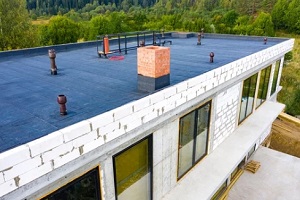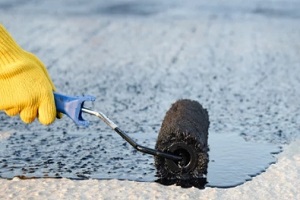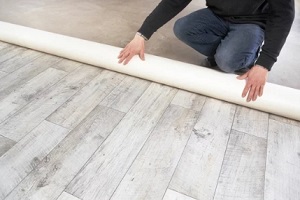 Commercial buildings in Delaware have a lot to think about when it comes to maintenance. It is common to face masonry cracks, decaying mortar, exterior mold or algae growth, and more thanks to the frequent fluctuations in weather and moisture that the state experiences.
Commercial buildings in Delaware have a lot to think about when it comes to maintenance. It is common to face masonry cracks, decaying mortar, exterior mold or algae growth, and more thanks to the frequent fluctuations in weather and moisture that the state experiences.
Over time, this consistent but minor wear and tear can eat away at the structural stability of a building, resulting in more expensive repairs and the potential to temporarily shut down operations or impact workflow for maintenance.
One of the simplest ways to increase the longevity of your Delaware commercial building and cut down on maintenance costs is to invest in a waterproofing service. Once your building is waterproofed, it will be much more resilient to water infiltration and the damage that can happen as a result.
Here is an overview of the best commercial waterproofing methods for Delaware buildings and how each of them works.
Why Waterproof a Commercial Building?
Waterproofing is not free—so why bother investing in it now instead of fixing minor problems later? There are a few good reasons why waterproofing a commercial building is worth your time, and the main one is preventing damage.
When water seeps into the exterior of a building or even its foundation, it expands and contracts along with the shifts in Delaware’s weather. This creates and subsequently widens gaps until they go from hairline cracks to entire missing bricks.
Without waterproofing, there is nothing a building owner can do to stop this process, and it can lead to structural instability that leaves the building unsafe to occupy. Waterproofing stops water from penetrating a building’s exterior.
This halts the process of water-damage cracks, and it also inhibits the growth of mold. Once mold begins to spread inside a building, it can weaken the wooden framing and make people sick. Waterproofing is a simple and effective way to eliminate these threats.
The Best Waterproofing Methods in Delaware
 If you have decided that waterproofing is a smart choice for your Delaware commercial building, your next question is probably what goes into waterproofing or how to choose the right type.
If you have decided that waterproofing is a smart choice for your Delaware commercial building, your next question is probably what goes into waterproofing or how to choose the right type.
An expert can review your building with you and recommend the ideal waterproofing method for your situation, but in general, the most commonly used waterproofing services are:
Polyurethane
One of the most common waterproofing methods is using a polyurethane membrane on concrete or brick. Because these surfaces are rough in texture, it can be difficult to get waterproofing protection into every nook and cranny.
Polyurethane is a membrane that adheres to the substrate evenly and is highly flexible, so it penetrates even fine cracks and divots. Because it is so versatile and effective, it is not the cheapest option, but it is still affordable for many commercial structures.
EPDM Rubber
EPDM stands for ethylene propylene diene monomer, and it is a type of rubber that is very flexible. For this reason, EPDM rubber is often used on roofs—especially those that are exposed to a lot of sunlight.
Unlike other types of waterproofing, which can be more rigid, the flexible nature of this rubber allows it to expand and contract with the sun’s heat or winter’s cold, so your membrane will always stay in place and will not wear down. It comes in varying thicknesses, with the thinner options among the lower cost possibilities.
Cementitious Coating
As the name implies, cementitious coating is a waterproofing coating that is made from cement materials like sand, but with the addition of silica materials that make it repel water.
Cement is not especially flexible, so cementitious coating is most often used in areas like foundations and basements, where flexing is not as much of a concern. It is affordable and very easy to apply, so labor costs are less with cementitious coating than other options.
Thermoplastic
For small areas, thermoplastics are the longest-lasting options. These small plastic beads are heated until they change shape and conform to the underlying substrate. However, the cost is quite high, at around $40 for a 48-inch roll, so thermoplastics are often used only in specific problem areas.
PVC and Bituminous Membranes
 Membranes that are common on roofs include both bituminous and PVC options. Bituminous membranes are made from a tar-like substance that is quick and easy to apply, but it is made from crude oil—thus, businesses looking at sustainability efforts may choose PVC instead.
Membranes that are common on roofs include both bituminous and PVC options. Bituminous membranes are made from a tar-like substance that is quick and easy to apply, but it is made from crude oil—thus, businesses looking at sustainability efforts may choose PVC instead.
PVC is vapor permeable, so the moisture off-gassing from your building can escape without letting new water in. PVC is a higher-end option when it comes to budgeting, with bituminous membranes much more affordable on the monetary scale.
Get Your Delaware Commercial Waterproofing Done Right
Waterproofing is far from a one-size-fits-all project, which means that it should be tackled by professionals with years of experience in commercial waterproofing for Delaware facilities.
The experts at Waterproof Caulking & Restoration can help you explore your options for waterproofing your structure in a manner that addresses your risks and suits your budget. Contact Waterproof Caulking & Restoration to schedule an appointment.
